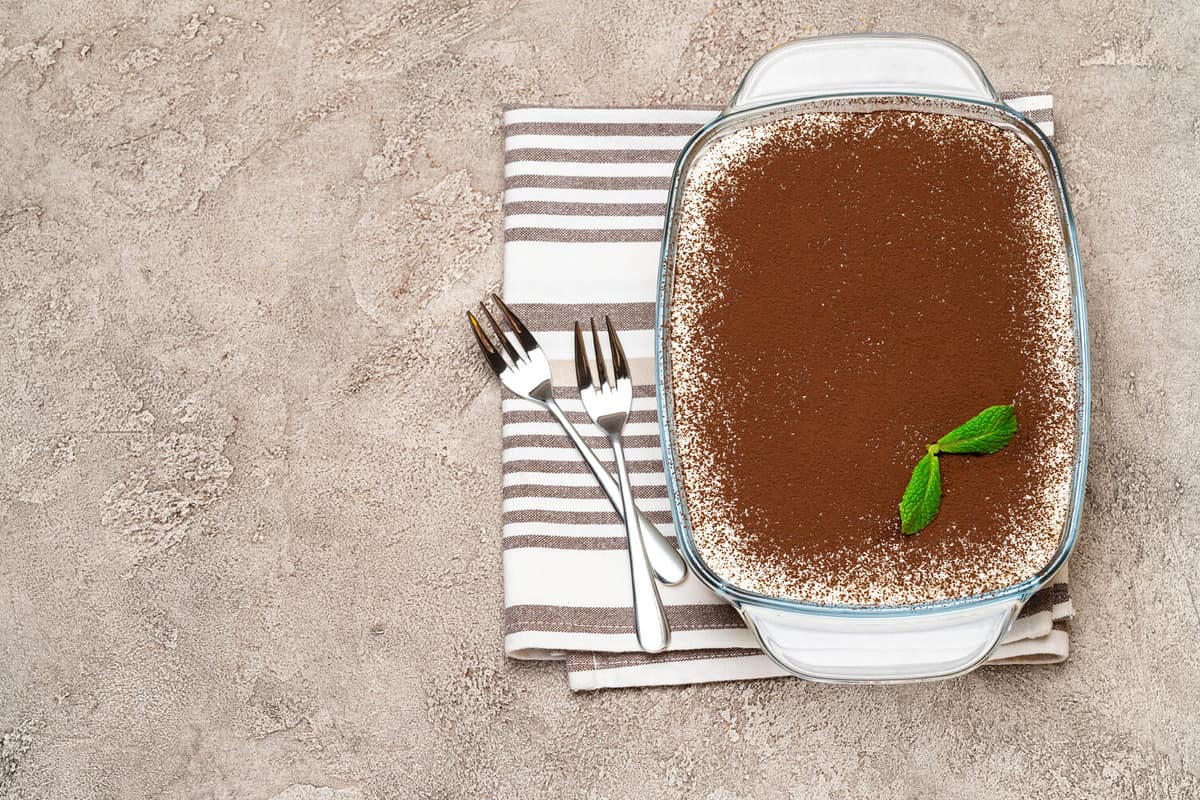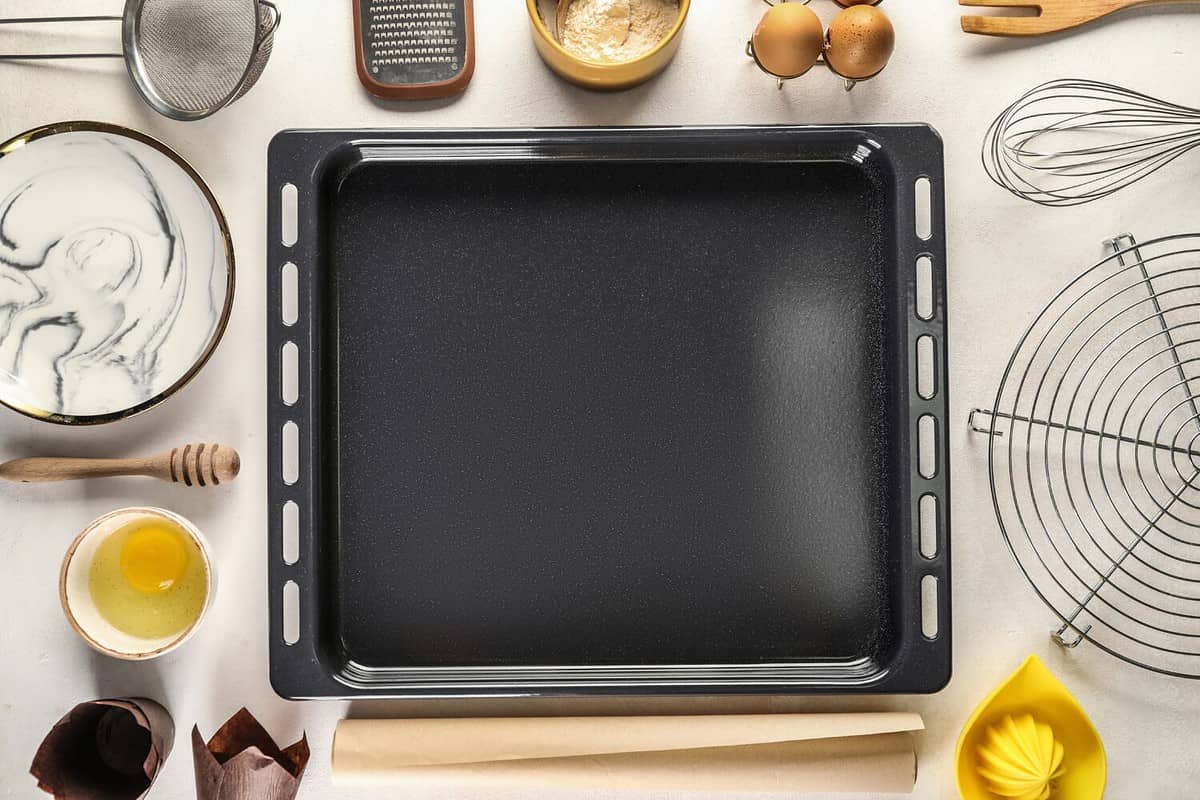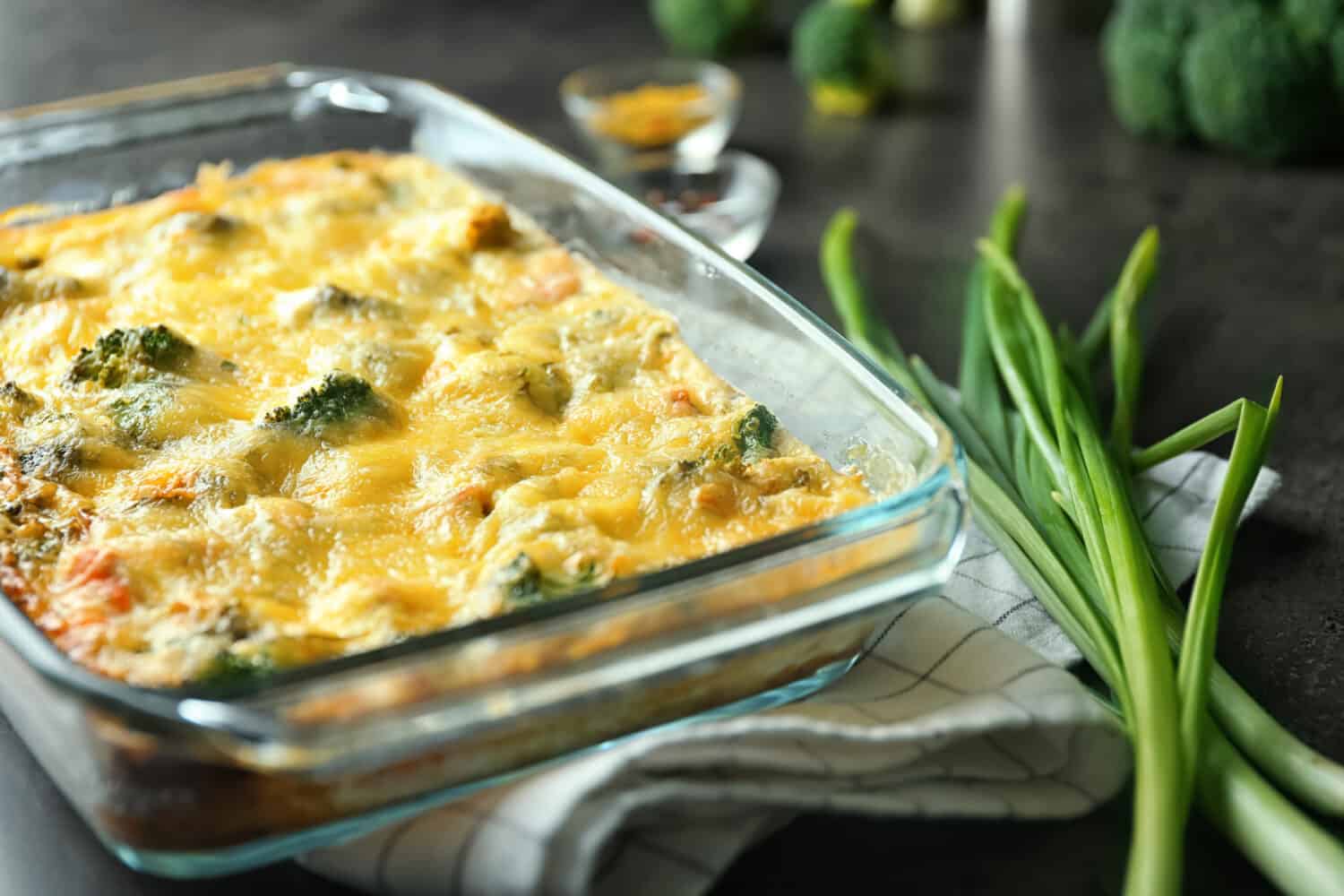Whether you’re new to cooking and baking or you’re an expert in the kitchen, there are plenty of options to choose from when it comes to types of cookware. If you frequently cook meals at home, you might already have your own preferences. When comparing types of cookware, one of the most common questions is about the difference between glass vs. nonstick pans.
Whether you should use glass or nonstick will depend on what you’re making. Generally, nonstick or metal cookware is better for baking desserts such as cakes or brownies. The main difference between them is that nonstick or metal pans conduct heat more quickly than glass cookware, which leads to more even cooking or baking.
No matter what you’re cooking up in the kitchen, any experienced chef will tell you the cookware you use does matter. Keep reading to find out more about the differences between glass vs nonstick cookware and which one you should use for your next recipe.

©RESTOCK images/Shutterstock.com
Glass vs. Nonstick: What Is the Difference?
There are so many types of cookware out there that if you don’t know the difference between them, it can be overwhelming. Whether you’re cooking dinner for your family or baking a batch of brownies, you might usually grab whatever happens to be in the cabinet, but different types of cookware do have an impact on your food. Two of the most popular choices in the kitchen are glass and non-stick cookware.
Glass cookware or glass pans are made entirely of glass, and they have both pros and cons. While they don’t conduct heat as quickly as metal or nonstick pans do, they do retain heat longer.
Nonstick or metal pans conduct heat better than glass pans do, which leads to them cooking the food more evenly. This is incredibly evident in baked goods such as cakes or brownies since baking them in a glass dish can often lead to the inside being undercooked.
Another difference between glass and nonstick cookware is how ingredients react to the material. Acidic ingredients can actually react to the metal in nonstick cookware, but glass cookware doesn’t have this effect. Glass cookware is best for use with acidic ingredients or foods baked at a lower temperature. Nonstick cookware is better for higher temperatures and baked goods that need to bake more evenly.
Main Differences Between Glass vs. Nonstick Cookware
Both glass and nonstick cookware have their place in the kitchen. Here are the main differences between them:
- Nonstick cookware is more durable
We all know that glass can shatter, but this is especially true when it comes to cooking with glass. Depending on the type of glass you use, glass cookware is sensitive to drastic changes in temperature, which can lead to shattering or even exploding. Metal cookware handles the changes in temperature much better than glass does. - Glass takes longer to heat up
When it comes to heat conduction, glass cookware conducts heat more slowly than nonstick cookware, leading to it taking longer to heat up. While this isn’t much of an issue if you’re baking a casserole or a baked pasta dish, it can interfere with the outcome of your baking when it comes to baked goods like brownies or cakes that need even temperatures to bake properly. - They react to ingredients differently
With some ingredients, you might not notice the difference between cooking in a glass or nonstick dish, but acidic ingredients are more likely to react when using a metal or nonstick pan, causing a metallic taste in your dish. That’s why you’re better off using glass cookware when including acidic ingredients such as citrus or tomatoes. - Glass cookware is more expensive
Like any material you buy in the kitchen, the cost is going to be a factor. Nonstick cookware is significantly more affordable than glass cookware. Naturally, glass cookware is going to cost more because of the materials used to make it. However, the quality of nonstick or metal cookware is going to vary depending on the brand.
Glass vs. Nonstick: Which One is More Durable?
Investing in cookware is worth it when you find the right products. But if you want to know which is going to last longer in your kitchen, durability is something to consider. Generally, metal or nonstick cookware is going to be more durable than glass.
Glass cookware is more likely to chip, crack, or even break when exposed to drastic temperature changes. However, assuming that you take good care of your glass cookware, you may find it lasts longer than non-stick, depending on the quality. Non-stick cookware includes a wide range of products and some of the higher-end cookware can last for years. However, the non-stick coating can peel off over time.
Glass vs. Nonstick: Which One Costs More?
Another factor to consider when choosing between glass vs. nonstick cookware is the cost. Glass cookware is more expensive than non-stick because of the materials used to make it.
Some nonstick cookware can be pricier as well if you’re looking for higher-quality products, but in general, you’ll find that glass cookware is more expensive. For example, a non-stick baking pan that costs between $7-$10 might cost between $15-$20 for the same size pan in glass.
Is It Safer to Use Glass or Nonstick?
If you’re deciding between glass and nonstick cookware, safety and health may be a concern for you. This is especially true with nonstick cookware since you might be wondering what actually makes the cookware nonstick.
When someone refers to a nonstick pan, they’re usually referring to metal baking sheets or pans with a nonstick coating. Nonstick cookware is coated with something called polytetrafluoroethylene, also known as Teflon. This chemical is what prevents food from sticking to the pan. It makes this type of cookware really simple and convenient to use and allows you to avoid spraying the pan most of the time. However, the question becomes is it safe to use?
There have been concerns in the past about the safety of Teflon coating. Many of the concerns were due to the perfluorooctanoic acid, or PFOA, that nonstick coating used to contain. PFOA has since been removed from the manufacturing process.
Is Teflon Coating Safe?
While Teflon coating is generally considered safe, there is a risk factor involved, especially when cooking above certain temperatures. According to Teflon, you should not use non-stick cookware with Teflon coating in an oven hotter than 500 degrees. Also, Teflon states that even if a piece of the coating did chip off and was ingested, the material is non-toxic. Although, if your non-stick coating is peeling off into your food, it’s best to replace the pan.
Glass cookware, on the other hand, is considered non-toxic and non-porous so it doesn’t have the same concerns as non-stick cookware. The main concern with glass cookware is the danger of the cookware overheating and then cracking or exploding. This can happen with drastic changes in temperatures when using glass cookware.
The safest option for glass cookware is using cookware that’s made with borosilicate glass. This type of glass is the most durable when it comes to changes in temperature.

©Pixel-Shot/Shutterstock.com
Which Is Better for Baking?
If you’re looking for the best kitchen products and are comparing glass vs. nonstick cookware, you might wonder which one is better for baking. While it can be beneficial to have both glass and non-stick cookware available in your kitchen, which one to use is going to depend on what you’re baking.
Generally, nonstick cookware is better for most baked goods because glass cookware is more prone to cooking things unevenly. For example, if you’re making a cake or brownies, it’s more likely for a glass pan to leave your dessert uncooked in the middle.
Nonstick cookware heats up more quickly, but it’s more likely for the edges of your dessert to overcook in this type of pan. Keep in mind that the metal used in non-stick cookware is often reactive as well. This means that when you bake with acidic ingredients, such as citrus, atoms from the metal can be transferred into your food. If you’re baking with acidic ingredients, stick to glass or another non-reactive type of cookware.
What Should You Make in a Glass Pan?
Glass cookware is different from nonstick cookware and has a variety of uses. Since it heats up slower than non-stick, it’s better to use when cooking with lower temperatures or dishes that need to cook for longer.
Glass cookware is best when you’re making dishes such as:
- Baked pasta
- Casseroles
- Pies
- Cobblers
- Meat
In general, glass cookware is going to be better for making dinner entrees while nonstick is going to be better for baking. One of the benefits of cooking with glassware is that it stays hot for longer, which means your dinner won’t get cold while you’re getting everything on the table.
What Should You Make in a Nonstick Metal Pan?
Nonstick or metal pans are extremely helpful to have on hand. Even though they cool down a lot quicker than glassware, they also heat up a lot quicker and can handle being in hotter temperatures without breaking or shattering. Nonstick pans are best for when you’re making:
- Cakes
- Brownies
- Bread
- Muffins
- Biscuits
- Scones
Most baked goods are going to be better with nonstick cookware. The exception to this is baked goods with acidic ingredients such as citrus or tomatoes. The metal in nonstick pans can actually react to the acidity, causing it to have an off flavor.
Glass vs. Nonstick: Which Is Better?
Whether you prefer to use glass or nonstick cookware in the kitchen is going to depend on your preferences and what you’re making. However, nonstick cookware will usually be more durable, more versatile, and less likely to break or shatter.
If you have to choose between one or the other, nonstick is going to have more uses in the kitchen, especially when it comes to baked goods. While there are numerous differences between them, nonstick cookware is also safer since glass cookware has a risk of shattering due to drastic temperature changes. It’s not a bad idea to have both types of cookware on hand, but nonstick is going to be more useful most of the time.
The image featured at the top of this post is ©Africa Studio/Shutterstock.com.
